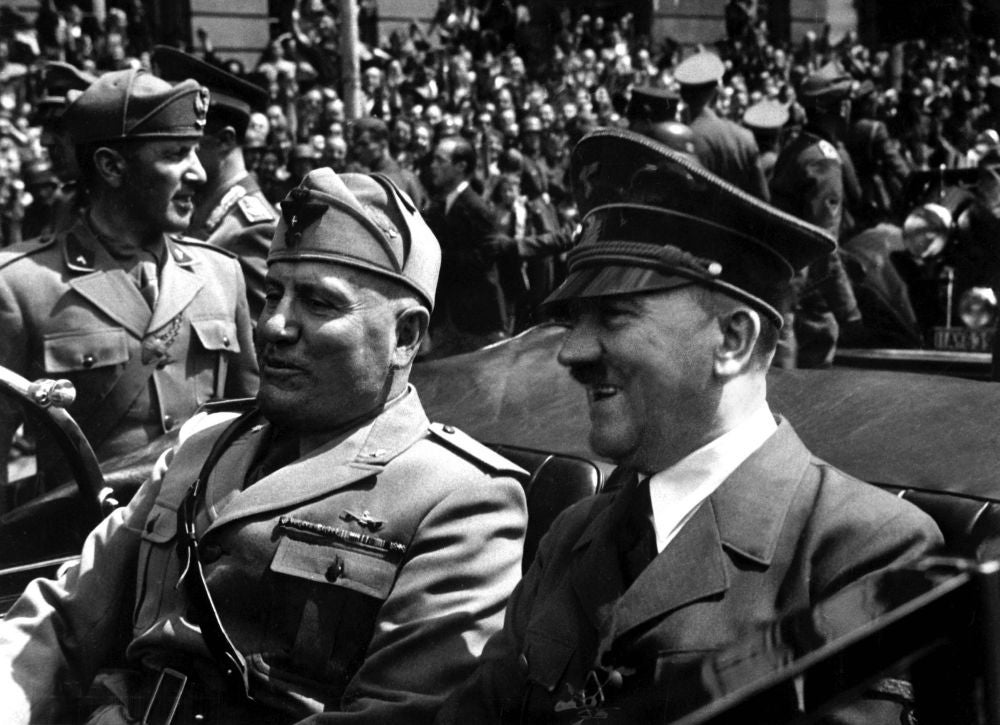
Echoes of a Turbulent Era

A rise in authoritarians. Political instability. Forcible annexation of territories. Desperate refugees. A sense of decline in the West. That’s not a litany of today’s sociopolitical drama but some of the crises that roiled Europe between two world wars.
It’s an era — known as the interwar period — that Brian J. Griffith knows well. A Ph.D. candidate in UC Santa Barbara’s Department of History, he studies modern Italian history, fascism and Europe in the runup to World War II. He doesn’t like what he sees today.
“What I worry about in looking out at the world today is the annexation of Crimea [by Russia], the pulling out of the U.N. Human Rights Council by the United States, the detention centers on the border — these are all interwar patterns that do not point in the right direction,” Griffith explained. “I want my students to see those parallels because they’re going to go out into the world after college to be civic leaders, members of the private sector, maybe even diplomatic figures of some kind, and I want them to learn the lessons of the interwar period.”
And so he’s teaching a six-week summer course — “Interwar Crisis: Europe, 1918-1939” — designed around an experimental blogging format that turns its students into teachers. The setup is straightforward: In addition to classroom time and extensive reading, each student is responsible for contributing to the course blog.
The contributions are broken into three writing categories: “Interwar Timeline,” which focuses on moments and events that were central to the period; “Interwar Snapshots,” short summaries and analyses of assigned readings; and “Present & Past,” summaries and analyses of current events that in some ways reflect or echo the course’s central topics and themes.
Every student is responsible for one entry on the timeline; there will be 30 by the end of the quarter. The snapshots are broken down into primary historical documents — the writings of such figures as Josef Stalin and Adolf Hitler — and secondary sources, including excerpts from key monographs and articles by leading historians. The present and past contributions will focus on “contemporary murmurings of the interwar period,” Griffith said. Each article is posted with the student’s byline, and the public is free to read, comment and share.
“What’s so exciting to me about doing it this way — in addition to making them learners and teachers — is it goes out automatically to our social media accounts,” Griffith said. “The website is automatically connected to Twitter and Facebook. I told my students, ‘You guys are facing a public, and I want to you take it seriously and do the most detailed job that you can because you are going to teach the public about this thing that you just learned.’ If I’m trying to get these students to think about these important parallels, I want the public to be thinking of these parallels as well.”
Griffith, who recently was named a Fulbright Scholar and will spend nine months in Italy beginning in September, noted that his students are “digital natives” and completely at home with all things online. So it makes sense to immerse them, digitally, with the sights and sounds of the interwar years.
“My goal is not necessarily to impose my politics on my students,” he said, “but to show them that some of the institutions and organizations which were constructed between World War I and the immediate post-World War II years — such as the Geneva Conventions, the United Nations and the European Union — are under threat from new strains of militant nationalism once again. We’re starting to see the challenging of those postwar systems, like with Russia and with our own country now, which if you look at the interwar period, were the very first steps to the catastrophe of the Second World War.”



